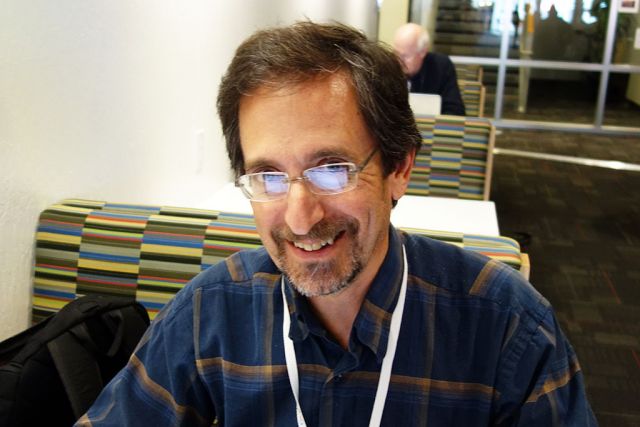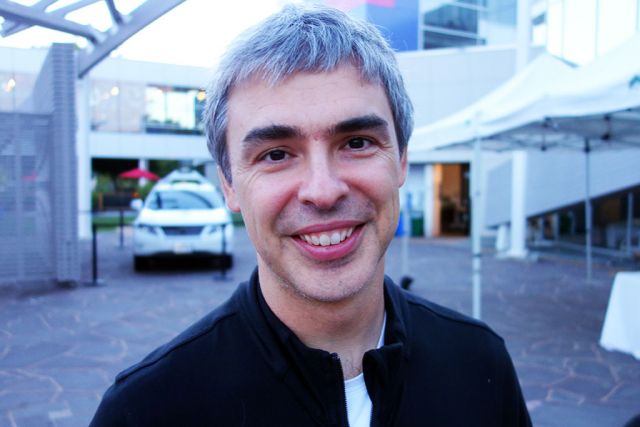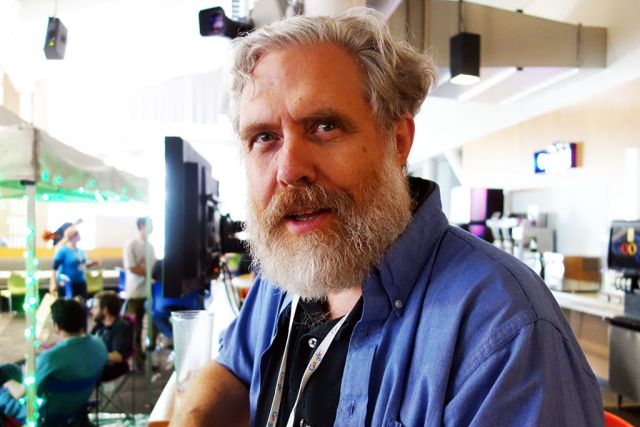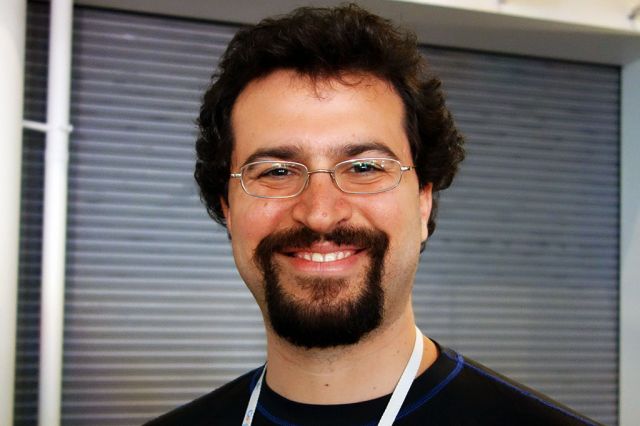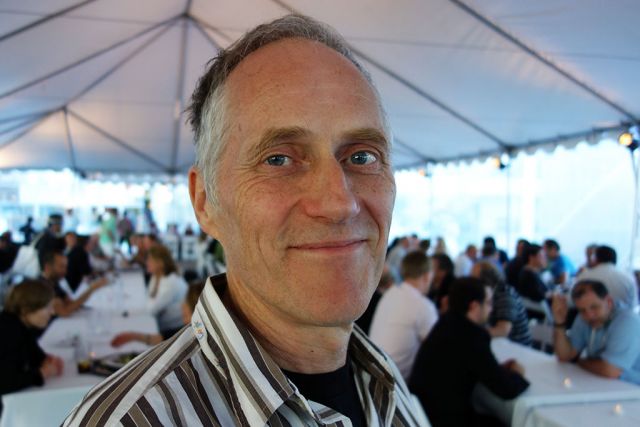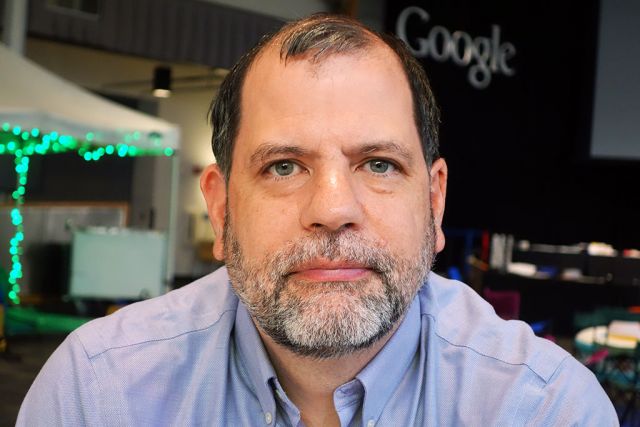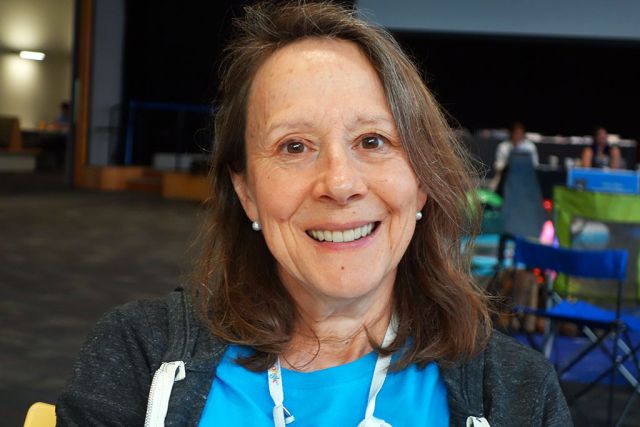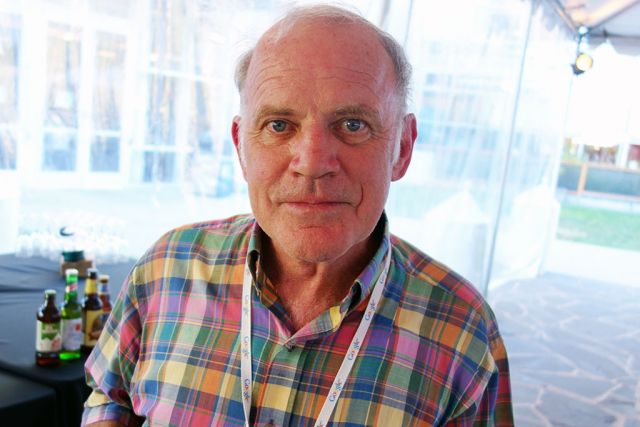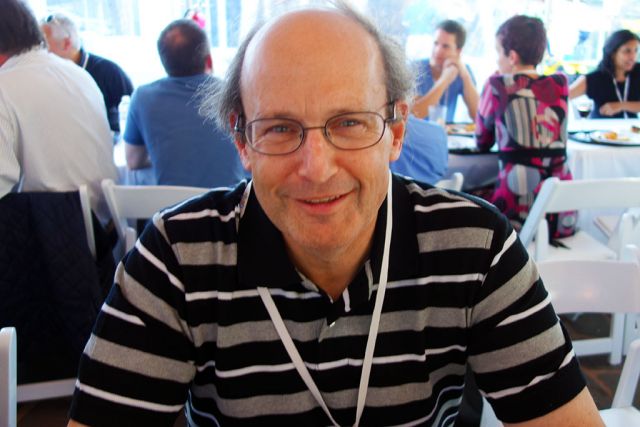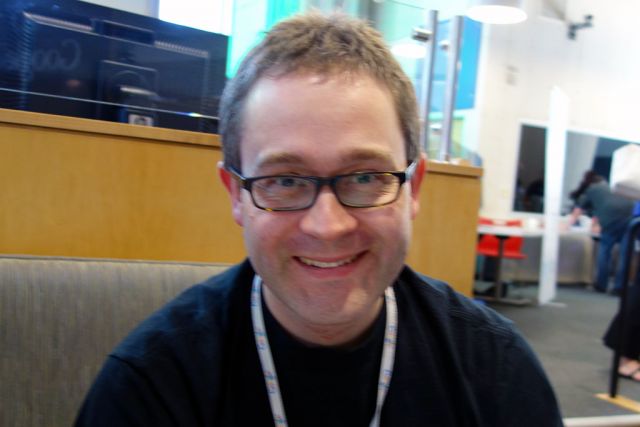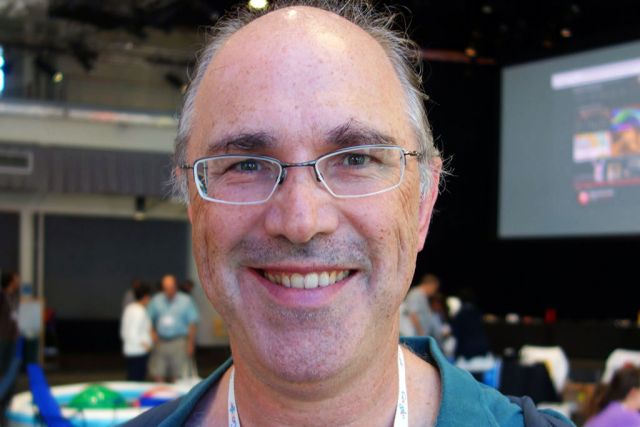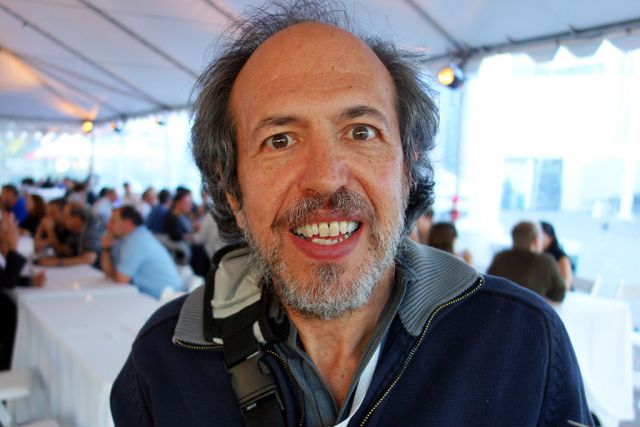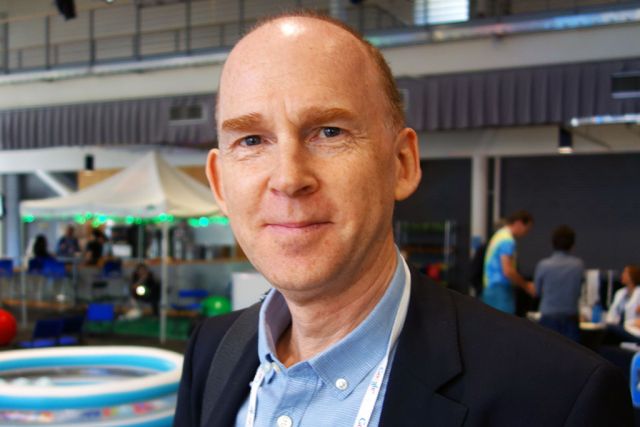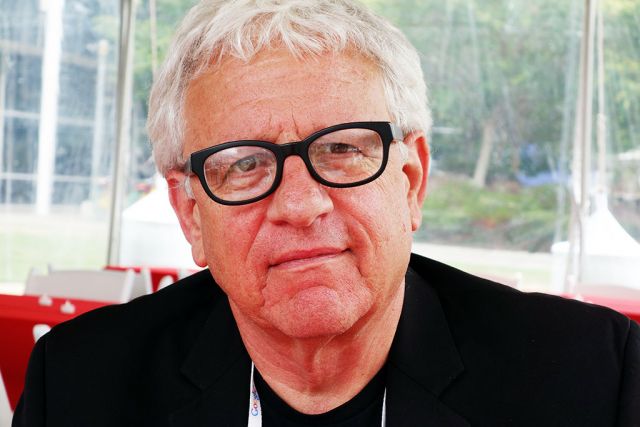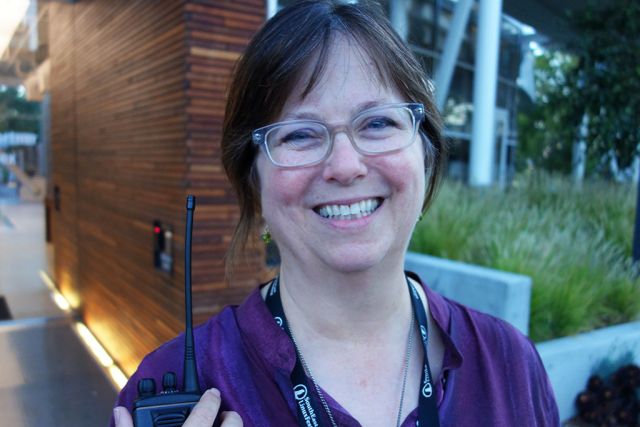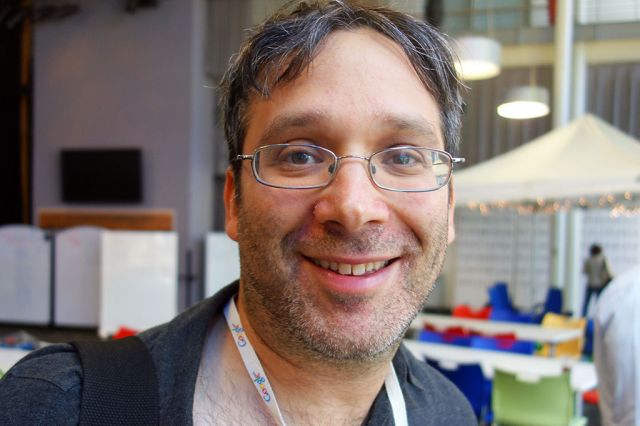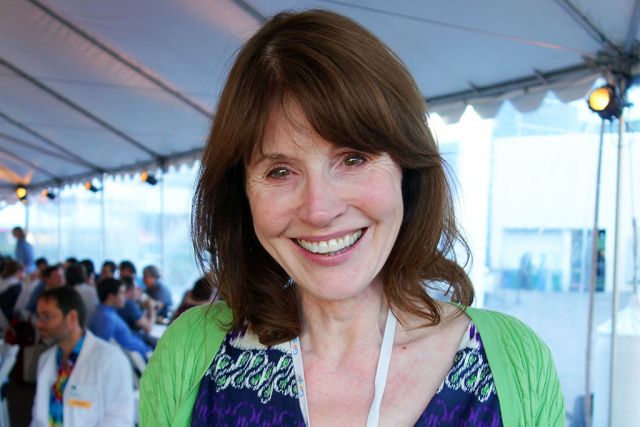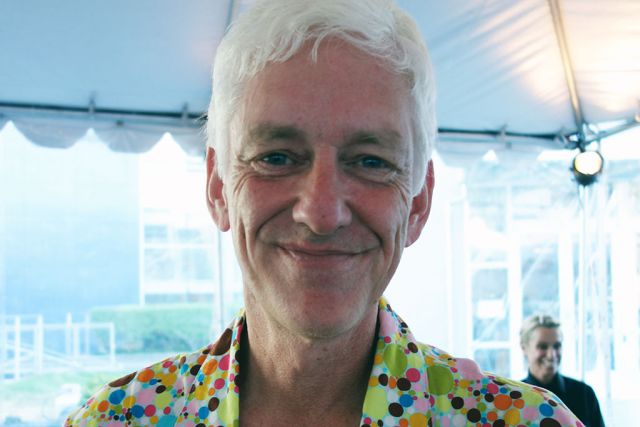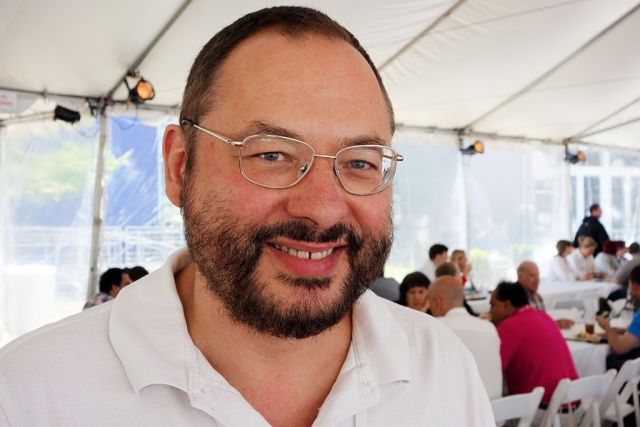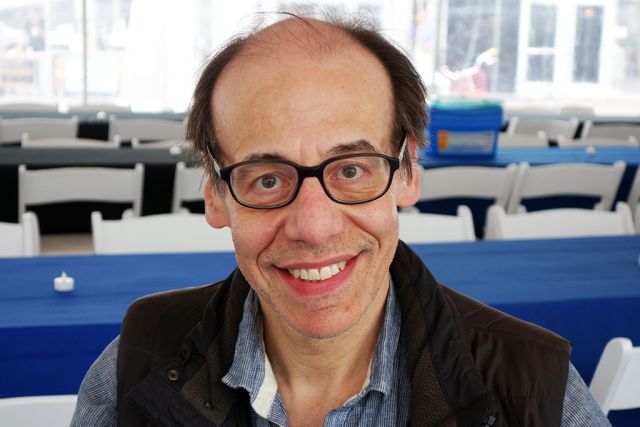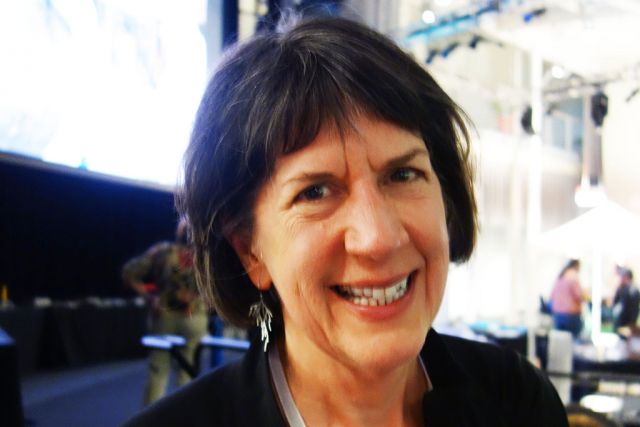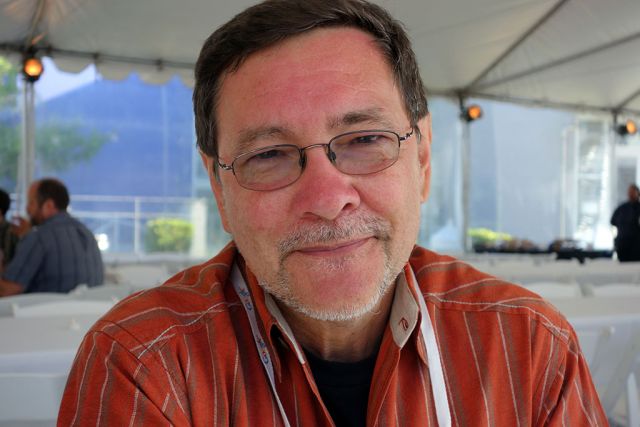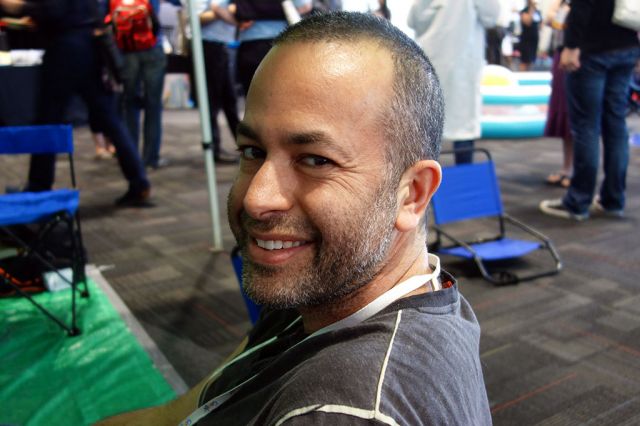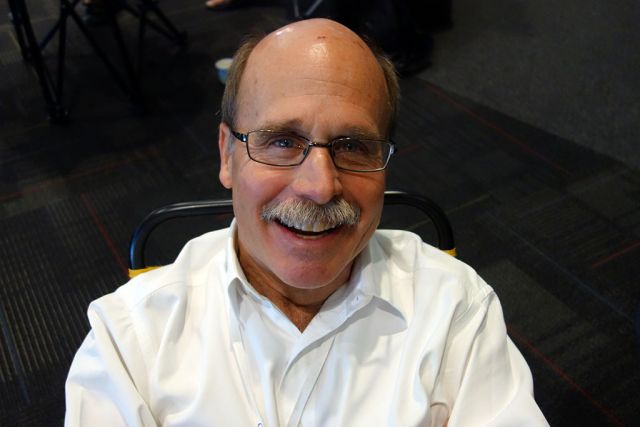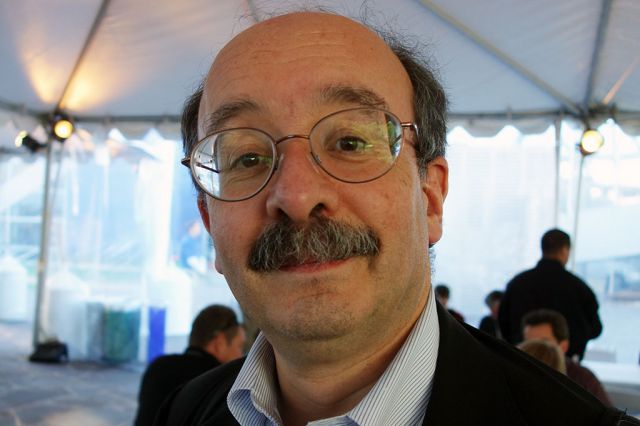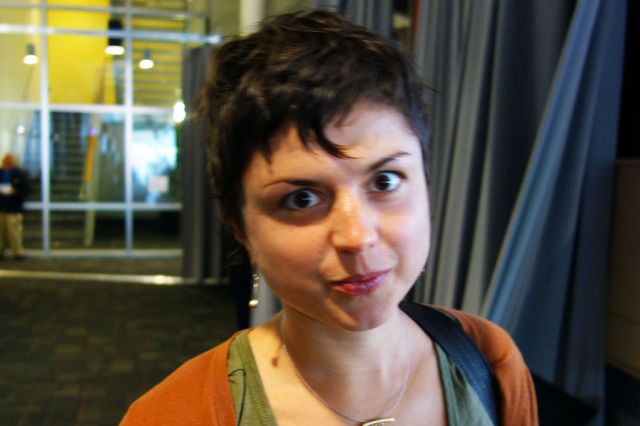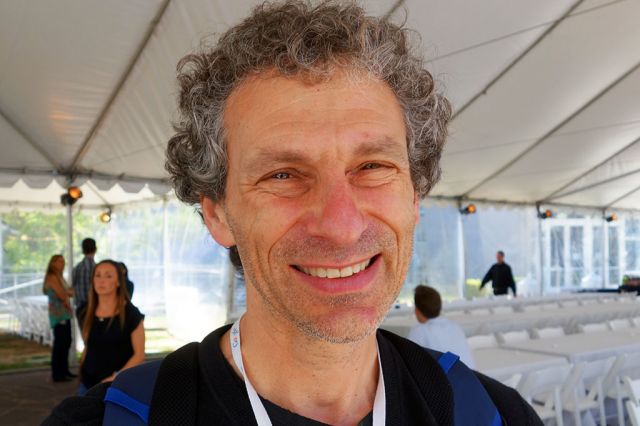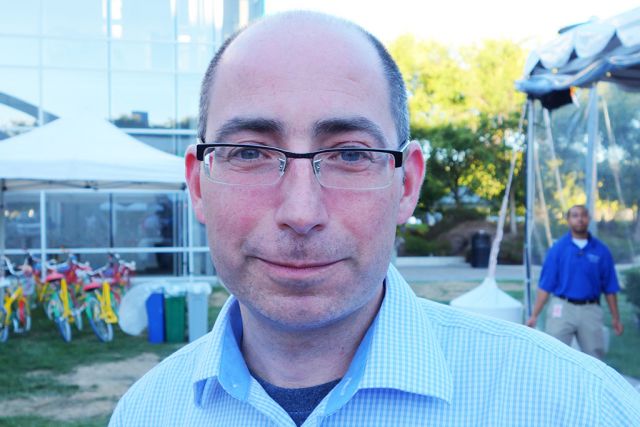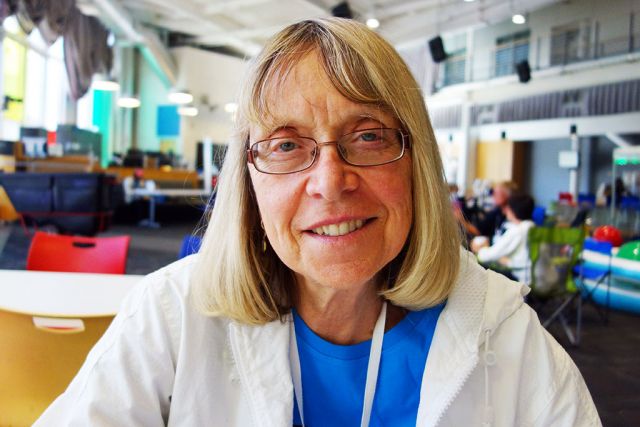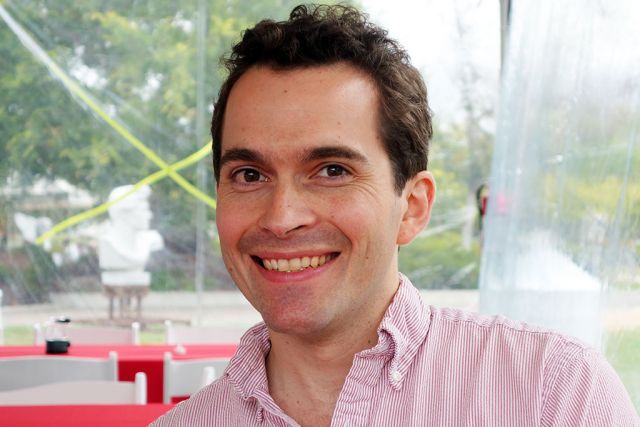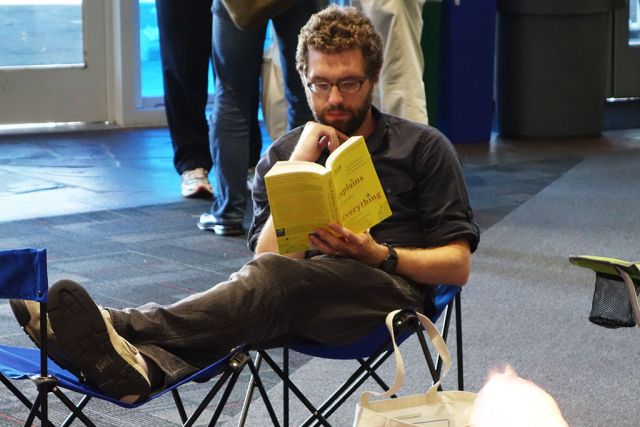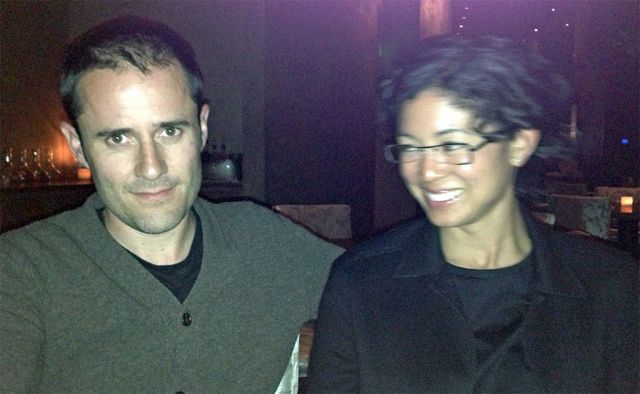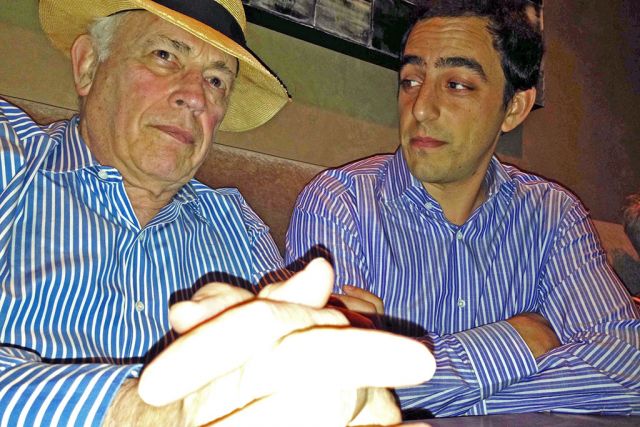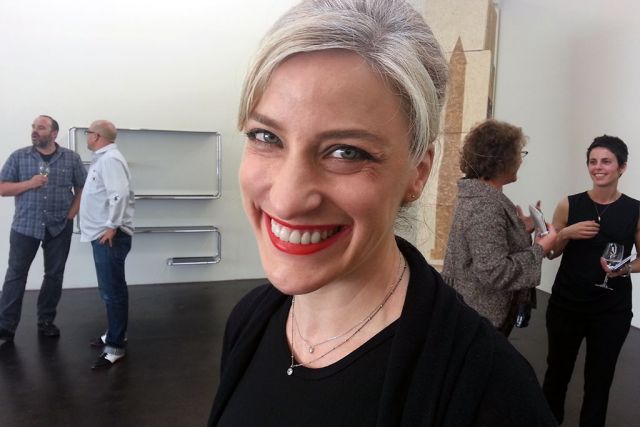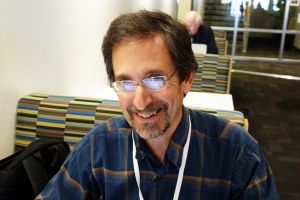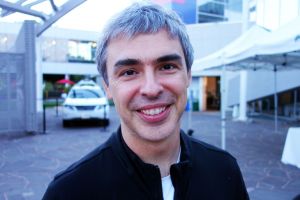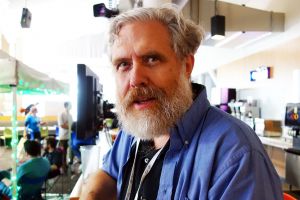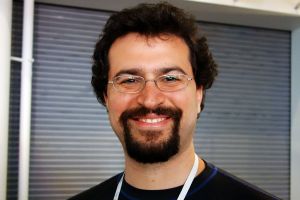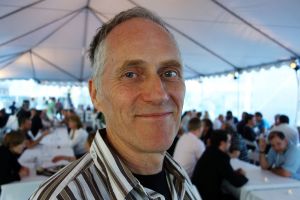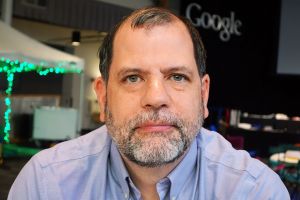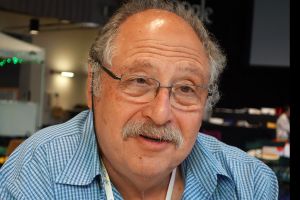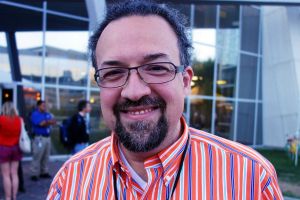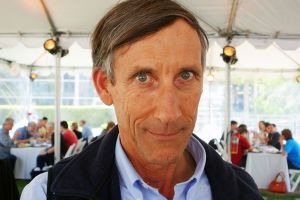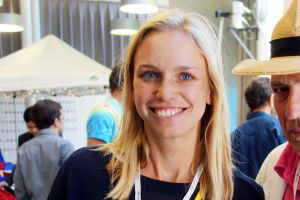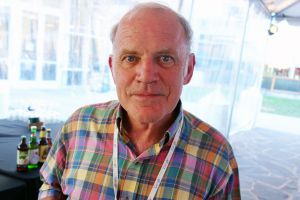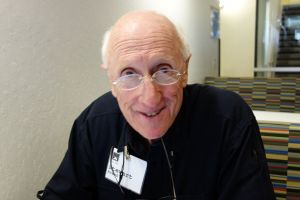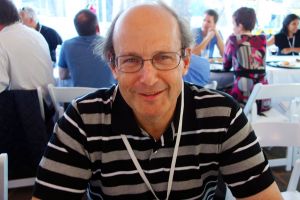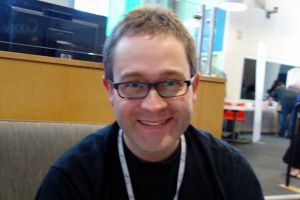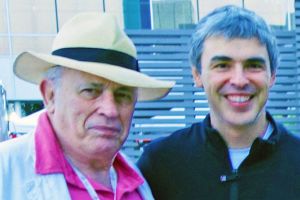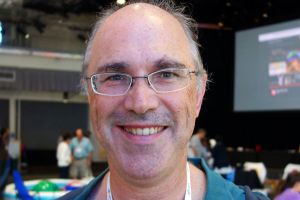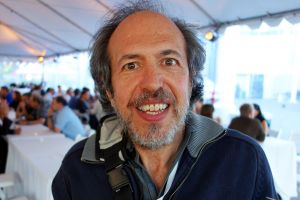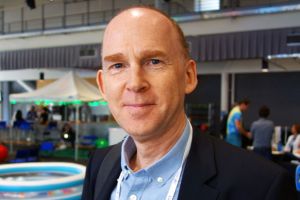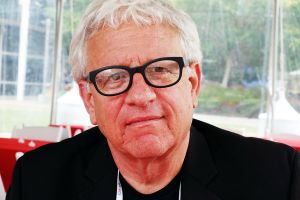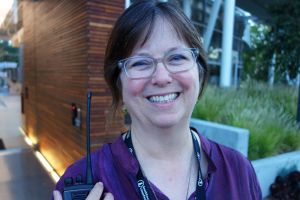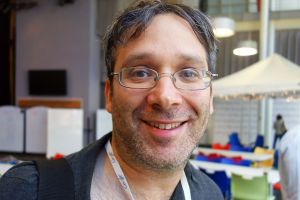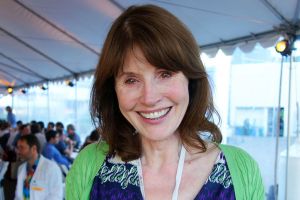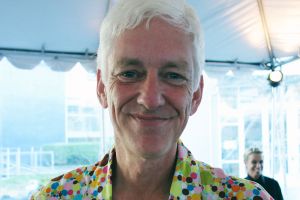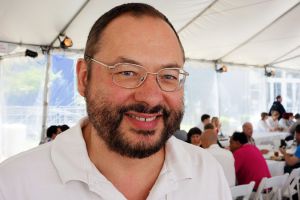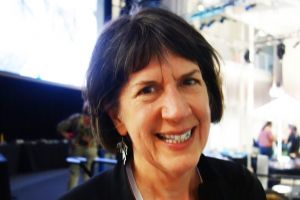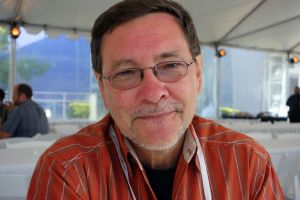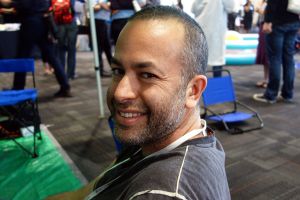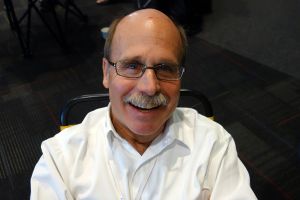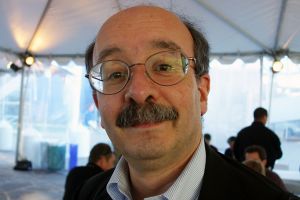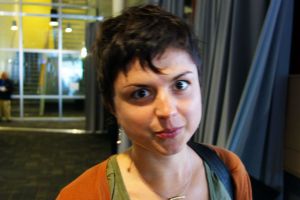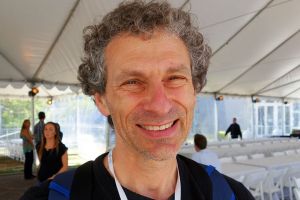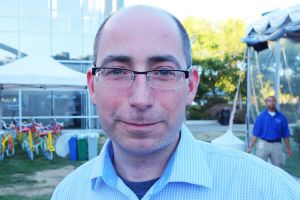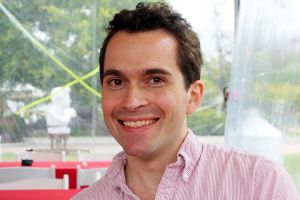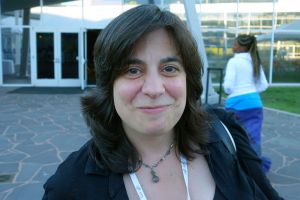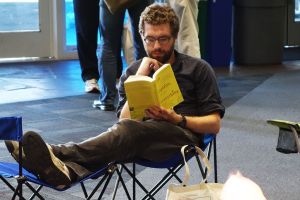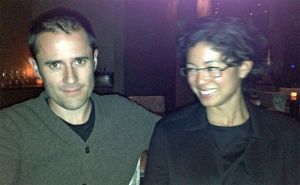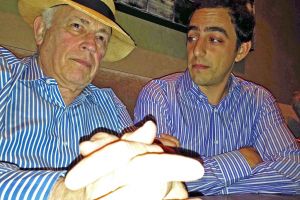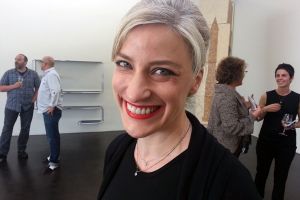You can answer the question, but are you bright enough to ask it?

INTRODUCTION
by John Brockman
The Edge motto, adopted from the artist James Lee Byars' "World Question Center" is: "To arrive at the edge of the world's knowledge, seek out the most complex and sophisticated minds, put them in a room together, and have them ask each other the questions they are asking themselves." As Wallace Stevens wrote in "Notes Toward A Supreme Fiction" (1942): "The final elegance, not to console / Nor sanctify, but plainly to propound."
It's the quality of the questions that defines the scientific endeavor, not the answers encrusted in stories and narratives. This year, at SciFoo 2013, Edge presented the opportunity to several of the nearly 300 participants to respond to the following: "What is your question from SciFoo 2013?" Watch the 8-minute video below for the responses. This is followed by responses to the question "Who and/or what was fresh and new at SciFoo 2013?", and a photo gallery, which extends to San Francisco the following evening.
But first, what is "SciFoo"?
The annual event is run by three sponsors: O'Reilly Media (Tim O'Reilly is responsible for "FOO," or, "friends of O'Reilly"), Nature magazine (and their spin-off company, Digital Science), and Google. This year 62% of the participants were new. This approach keeps the event new and fresh every year. The ratio of participants to interesting people? 1-to-1.
As theoretical physicist and Nobel Laureate Frank Wilczek noted in his report on SciFoo 2007 for Edge:
"SciFoo is a conference like no other. It brings together a mad mix from the worlds of science, technology, and other branches of the ineffable Third Culture at the Google campus in Mountain View. Improvised, loose, massively parallel—it's a happening. If you're not overwhelmed by the rush of ideas then you're not paying attention."
Also, see George Dyson's report on SciFoo 2007; Photos and comments on SciFoo 2009, and the Edge-SciFoo report on SciFoo 2011.
Tyler Cowen, Joseph "Yossi" Vardi, Carl Page, Fiery Cushman, Lee Smolin, Linda Stone, Paul Davies, Paul Steinhardt, Peter Norvig, Richard Potts, Steve Fuller, Stuart Firestein
WHO AND/OR WHAT WAS FRESH AND NEW AT SCI/FOO 2013?
George Dyson, Esther Dyson, Steve Fuller, Stewart Brand, Paul Saffo, Coco Krumme, John Coates
A fascinating weekend, with one lingering regret—that I missed Rory Wilson’s talk on the use of accelerometers in free living animals. I had to piece together the gist of his talk from scraps given me by others and, fortunately, by Rory himself. In his work as an animal behaviorist Rory has been using actigraphy and accelerometers attached to animals in the wild in order to monitor continuously their energy expenditure. Beyond this, though, the data Rory has collected has uncovered subtle changes in background movement that actually reflect the animal’s motivational state. This finding is tremendously interesting. As we learn more about the brain, the more we see that it is built primarily to plan and execute movement, that activities we—under the influence of our Platonic heritage—commonly viewed as pure thought in fact have a somatic echo. Some scientists working with actigraphy have even found predictors, tremors if you will, of impending neuro-degenerative disease. But background activity changes that may reflect motivational states? The very possibility should tantalize any behavioural scientist.
Serendipity was at work this weekend: I met perhaps the only other person at scifoo (on the entire googolplex?) with a dumb phone. I stubbornly hold onto mine for the very purpose of serendipity, to dampen distraction. Ziyad Marar and I had a wonderful conversation about habits and human behavior, and soon discovered we have in common 1999-era telephones, as well as a healthy skepticism of social media. I hadn't heard of Ziyad's books (Happiness Paradox, Deception, Intimacy), but I picked up two at scifoo and couldn't put them down: his writing mulls human nature, weaving in literature and philosophy without succumbing to the tired conventions of contemporary science writing. A breath of fresh air.
PAUL SAFFO: Kröpelin's Mysteries of the Sahara
The single most astonishing session for me was Stefan Kröpelin's "Miracle of the Sahara." Kroplin compressed 40 years of research and exploration into a whirlwind tour of the Sahara's mysteries and what it is like to do science there. Summarizing conditions, he noted, "Sometimes, you get stuck hundreds of times per day… and the real problem isn't the heat; it's the cold." The size of the U.S, Kröpelin's Sahara is full of mysteries: Gilf Kebir, a sand plateau atop an ancient fluvial system in Southwest Egypt holds rock art from the middle Holocene, over 10,000 figures in one cave alone. The Wadi Howar was thought by Heroditus to be the source of the Nile; now it is vast desert, but in it's heart is the Ounianga Kebir, a cluster of freshwater aquifer-fed "gravity lakes," and home to seven crocodiles, the remnant of an Ice Age population, now isolated from other crocs by hundreds of miles of searing desert.
But the biggest mystery was sitting right in front of Kröpelin as he spoke. It was a chunk of "Libyan Desert Glass," 28 million year-old fused glass the color of pale emerald and the purest natural glass in the world. Discovered by Europeans in 1932, the stuff is strewn across a vast area of desert at the edge of Egypt's great Sand Sea. Kröpelin's chunk looked like a glass meteorite, complete with ablation regmaglypts, suggesting that the glass was created by a meteor strike that liquefied the surface rocks in a process not unlike that which created tektite strewn-fields elsewhere on the earth. Except… no one has found a crater. Perhaps the glass is a radiative melt artifact of a Tunguska-like airburst? Others speculate that it is hydrovolcanic in origin, but no has found a volcanic source.
What we do know is that the Sahara's earliest inhabitants knapped the glass into tools, and that it was prized by the Egyptians—a scarab carved from the stuff is set into a pectoral worn by Tutankhamun. That fact tied nicely with Kröpelin's final and most surprising statement: the origins of the pharonic tradition lie in the Western Desert, not the Nile Valley. And if the Egyptian civilization was born from the Sahara, then by association, Europe's roots are hidden there as well.
STEWART BRAND: What if climate change is good for civilization?
(If it is, it would completely invalidate the first chapter of my Whole Earth Discipline, which spells out how climate change is an apocalypse-in-waiting for civilization. My personal mantra tries to be: "Every day I wonder how many things I am dead wrong about." This might be one of them.)
Climate change apparently ignited civilization in Egypt, said Stefan Kröpelin in a small, intense session at SciFoo. His four decades of insanely adventurous researches in the eastern Sahara—where no one goes—show that people lived all over that region when it was a rich savanna filled with game, before 8,000 years ago. In those centuries people avoided the Nile, which was dangerous with floods and fearsome animals.
In the period 5300-3500 BCE the Sahara gradually but relentlessly dried up. The people from the desert were forced to take on the Nile, first for farming, soon for a river-taming civilization of such durability that it eventually inspired Greece, Rome, and Europe.
Climate change made it happen. The evidence is in the sumptuous cave art at Wadi Sura and the silt of the astonishingly ancient Ounianga Lakes.
What is our unthinkably dangerous Nile that climate change might force us to take on? What abilities might we be forced to acquire?
STEVE FULLER: How must we re-orient ourselves to make the most out of seasteading?
At Sci Foo Camp 2013, David Ewing Duncan and Linda Avey presented a very persuasive case for an indefinite expansion of 'seasteading', a term that I had learned about from Duncan in an earlier session on cognitive and moral enhancement by neuroscientific means. I had been already familiar with Peter Thiel's support for a ship floating just beyond US territorial waters near San Francisco Bay that enabled innovators lacking US citizenship to conduct research outside the gaze of American regulators. However, the session enabled me to see that seasteading, far from being a strategy for avoiding inconvenient forms of regulation, on the contrary might be something that states themselves encourage—though perhaps indirectly, depending on the political climate. However, this proposal would make policy sense only on the following condition: The outcomes of the research conducted in these 'ethics-free' zones would have to be made public, with the understanding that no one would be prosecuted, no matter how bad the outcomes are perceived to have been. In other words, we would need to become sufficiently mature to accept the admission of error in pursuit of a good cause as adequate punishment in itself.
The most wonderful session I attended—and the most meaningful experience overall—was Michael Chorost talking about his own cochlear implant. It was what science really is—the response to curiosity. He told us how it worked, played recordings so we could get some sense of how things sound to people who have an implant. He passed some samples around the room for us to touch and examine. We talked about learning to hear—and how there's a point in childhood after which it gets harder and harder to learn. We got an understanding of the technology, and also of how the technology changes both individual lives and cultural norms—such as sign language, which may become the language of the poor deaf as the rich deaf start using cochlear implants. In theory they can be covered by Medicare, but somehow the rich seem to get them and the poor don't... Is that right?
Is there something similar coming for vision? (Of course, this comment—and the session itsel —raises questions and doesn't answer them all; that's the point of SciFoo...)
This was SciFoo's seventh year, and, in era where the half-life of a conference is measured in years, not decades, it is holding up well. Tim O'Reilly (O'Reilly), Timo Hannay (Nature/Digital Science )and Chris DiBona (Google) have found a formula that works, and are sticking to it. Big Data, once the all-consuming subject, is now just another scientific instrument, like a space telescope or an electron microscope, and the excitement was back to the details of what you can do with it, now that you have it. And how do you encourage scientific thinking in children (and politicians)? Among the people who showed up from left field and stole the show (a regular occurrence at SciFoo) this year was Carmen Medina, who, in her own introductory words, "spent 32 years at the Central Intelligence Agency and decided early on that how we form opinions is much more interesting than any particular opinion. Passionate about empowering heretics in the workplace and attacking conventional wisdom. Believe we need entirely new construct for the concept of national security, perhaps abandoning it altogether. Convinced there is worldwide conspiracy for preservation of Mediocrity." Amen!

